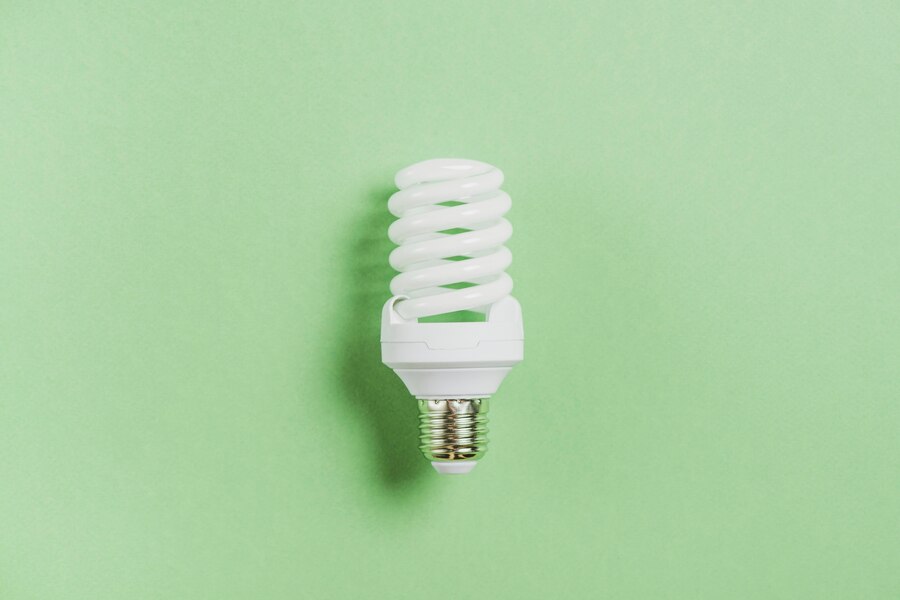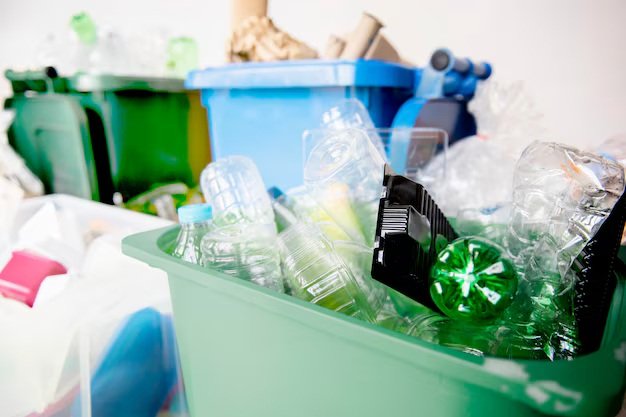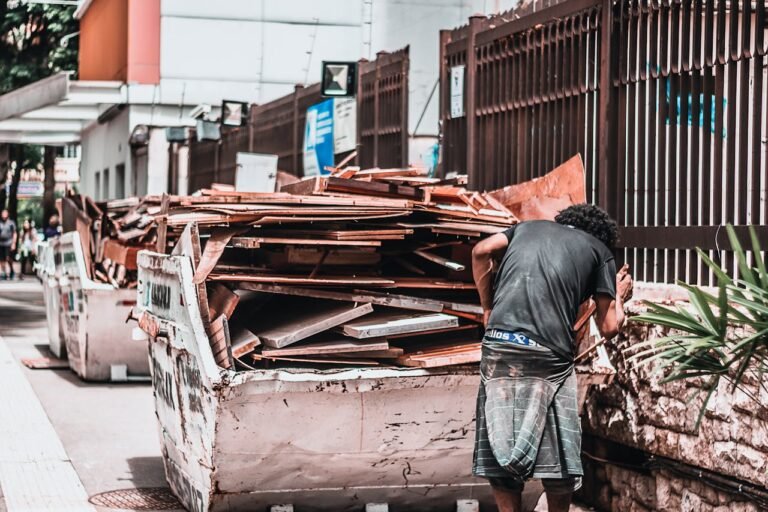How to Properly Dispose of Fluorescent Tubes
I still remember the day I learned the hard way about fluorescent tubes. My partner and I had just swapped out a set of flickering, outdated fluorescent lights in our garage for shiny, new LED fixtures. Feeling accomplished, I gathered the old tubes, tossed them into a box, and—without much thought—placed the box by the curb with the trash.
The next morning, the garbage collectors left a note taped to the box: “Hazardous waste—cannot collect.” Confused, I turned to the internet and found out just how dangerous these seemingly harmless glass tubes can be. They contain mercury—a toxic substance—and must be disposed of with care to avoid environmental and health risks. My careless mistake was a wake-up call.
This guide is my attempt to save you from that same headache and to empower you with everything you need to know about handling fluorescent tubes responsibly. By the end, you’ll not only know how to recycle or dispose of them safely but also why it matters, how others are doing it, and what the future holds for sustainable lighting.

In This Article
- Why Fluorescent Tubes Require Special Disposal
- My First Lesson in Proper Disposal
- What Are Fluorescent Tubes?
- Global Regulations and Best Practices
- Safe Fluorescent Tube Disposal Options
- How to Safely Remove and Store Fluorescent Tubes
- What to Do If a Fluorescent Tube Breaks
- Recycling Fluorescent Tubes: A Sustainable Solution
- Where to Recycle Fluorescent Tubes
- The Global Approach to Fluorescent Tube Disposal
- The Cost of Improper Disposal
- Personal Advocacy: How You Can Make a Difference
- A Brighter Future Without Mercury
Why Fluorescent Tubes Require Special Disposal
Fluorescent tubes are far from ordinary trash. Each tube contains 3-5 milligrams of mercury, a toxic heavy metal. While this might not sound like much, it’s enough to contaminate 6,000 gallons of water to unsafe drinking levels. Mercury doesn’t break down; it accumulates in the environment, particularly in water systems, where it transforms into methylmercury—a compound that builds up in fish and, eventually, in humans.
According to a United Nations Environment Programme (UNEP) report and a 2018 study, mercury pollution from discarded fluorescent tubes contributes significantly to global mercury emissions. In the U.S. alone, an estimated 620 million fluorescent lamps are disposed of annually, with many ending up in landfills where they release mercury into the air and soil.
When disposed of properly, however, fluorescent tubes can be recycled, keeping harmful materials out of the environment and recovering valuable resources like glass, aluminium, and even mercury.
Case Study: Environmental Damage in Landfills
A 2021 study by the University of Colorado suggests that landfills without proper hazardous waste controls leak significant amounts of mercury into the soil and groundwater, leading to long-term contamination. In one example, mercury emissions from waste in the U.S. accounted for 28 metric tons annually, largely due to improper disposal of products like fluorescent tubes.
My First Lesson in Proper Disposal
When I first realised the environmental impact of mercury, I panicked. The tubes I had casually thrown out could be leaking toxins. I decided to learn everything I could about safe disposal, starting with a visit to my local hazardous waste facility. There, I discovered that fluorescent tubes are classified as universal waste in many states, requiring specialised recycling processes. The staff explained that the mercury, glass, and metal components are all recyclable, and their safe recovery prevents environmental harm.
This visit not only eased my guilt but also taught me how easy it is to dispose of these tubes properly. I’ve since made it a habit to educate others about these critical steps.
Learn More How to Responsibly Dispose of Bubble Wrap: Expert Tips and Eco-Friendly Alternatives
What Are Fluorescent Tubes?
Fluorescent tubes, also called fluorescent light bulbs or strips, are low-pressure mercury-vapour gas discharge lamps. They emit visible light through fluorescence, created when ultraviolet light produced by mercury vapour excites phosphor coatings on the inner surface of the tube.
Key Components of Fluorescent Tubes
| Component | Material | Environmental Concern |
|---|---|---|
| Mercury | Heavy metal | Highly toxic, bioaccumulative |
| Phosphors | Rare earth elements | Limited recyclability |
| Glass | Silicate material | Non-toxic but breakable |
| Electrodes | Tungsten | Potential e-waste issue |
| Aluminum or Plastic Caps | Secondary materials | Recyclable but resource-intensive |
Global Regulations and Best Practices
Disposal requirements vary globally. Below is a summary of notable regional approaches:
| Region | Regulation | Unique Features |
|---|---|---|
| European Union | WEEE Directive (Waste Electrical and Electronic Equipment) | Mandatory recycling; producer responsibility programs |
| United States | Universal Waste Rule | Facilitates collection and recycling |
| Japan | Home Appliance Recycling Law | Focus on recycling and reuse |
| Developing Countries | Lack of robust infrastructure | High rates of improper disposal |
Advocating for harmonised global standards is essential to address the growing issue of hazardous waste management.
Safe Fluorescent Tube Disposal Options
1. Certified Recycling Facilities
Recycling is the most sustainable method for disposing of fluorescent tubes. Certified facilities recover materials like mercury, glass, and metal for reuse.
How Recycling Works
- Collection: Tubes are collected at designated drop-off points.
- Crushing: Machines safely crush tubes while capturing mercury vapour.
- Separation: Components (glass, metals, mercury) are separated and processed.
Interactive Tool: Find a Recycling Facility
Use the Earth911 Recycling Locator or the Environmental Protection Agency’s Universal Waste Database to find certified facilities near you.
2. Hazardous Waste Collection Events
Local governments often organise hazardous waste collection events. These programs are designed to handle household hazardous waste, including fluorescent lamps, safely.
- Example: The city of Seattle conducts quarterly hazardous waste collection drives, diverting over 5,000 lbs of mercury waste annually.
3. Retail Takeback Programs
Major retailers like Home Depot and Lowe’s offer takeback programs for used fluorescent lamps. Customers can return their used bulbs to designated collection points in participating stores.
How to Safely Remove and Store Fluorescent Tubes
Removing and storing fluorescent tubes for disposal or recycling might seem straightforward, but safety is key. Here’s a step-by-step guide based on my experiences:
Step 1: Power Down the Fixture
Before touching the tube, turn off the light switch and circuit breaker to eliminate the risk of electric shock.
Step 2: Remove the Tube Carefully
- Grasp the tube gently at both ends.
- Twist it slightly to disengage it from the fixture. Avoid applying too much pressure to prevent breakage.
Step 3: Store Safely
- Use the original packaging or a sturdy box lined with soft material like bubble wrap.
- Label the box with “Hazardous Waste” to ensure proper handling.
Step 4: Keep Them in a Safe Location
Store the tubes in a cool, dry area away from children or pets until you can recycle them.
What to Do If a Fluorescent Tube Breaks
A broken fluorescent tube releases mercury vapour into the air, which can be hazardous if inhaled. Here’s what to do:
Step 1: Ventilate the Area
- Open windows and doors to let in fresh air.
- Leave the room for at least 15 minutes to allow the vapours to dissipate.
Step 2: Collect the Pieces
- Wear gloves and use stiff cardboard to scoop up glass shards.
- Use duct tape to pick up smaller particles and powder.
Step 3: Secure the Debris
Place all fragments and cleaning materials in a sealable bag or jar. Label it “Broken Fluorescent Tube” for proper disposal at a hazardous waste facility.
Important: Never use a broom or vacuum cleaner. These tools can spread mercury particles.
Recycling Fluorescent Tubes: A Sustainable Solution
Recycling fluorescent tubes prevents mercury contamination and recovers valuable materials. Many facilities have specialised processes to extract and reuse mercury safely.
Steps in the Recycling Process
- Collection: Tubes are transported to recycling centres.
- Crushing in a Sealed Chamber: Prevents mercury vapour from escaping.
- Material Separation: Mercury is captured, glass is reused, and metal is recycled.
Where to Recycle Fluorescent Tubes
Local Recycling Programs
- Hazardous Waste Drop-Off Sites: Many cities offer facilities for fluorescent tube recycling.
- Retailer Takeback Programs: Home Depot, Lowe’s, and IKEA often accept used tubes.
Pro Tip: Use tools like the Earth911 Recycling Locator to find nearby options.
Mail-In Recycling Kits
For those without nearby facilities, mail-in services like RecyclePak offer a convenient alternative. These programs send you pre-labelled boxes to fill and return for recycling.
The Global Approach to Fluorescent Tube Disposal
Disposal and recycling policies vary by region:
- United States: The EPA’s Universal Waste Rule governs fluorescent lamp disposal, encouraging recycling while simplifying requirements for businesses.
- European Union: Under the WEEE Directive, manufacturers are responsible for recycling.
- Japan: The Home Appliance Recycling Law mandates proper disposal through retailers.
Learn More: How to Dispose of Candles Properly: Expert Tips for Sustainable Candle Lovers
The Cost of Improper Disposal
Improperly discarding fluorescent tubes has significant consequences:
- Mercury Pollution: Contaminates air, soil, and water, impacting ecosystems and human health.
- Fines and Legal Penalties: Many regions impose fines for improper disposal.
- Loss of Recyclable Materials: Disposing of tubes in landfills wastes valuable resources like aluminium and glass.
Personal Advocacy: How You Can Make a Difference
You don’t need to be an environmentalist to contribute to a cleaner world. Here are some steps you can take:
- Educate Others: Share this guide with friends, family, and coworkers.
- Organise Community Recycling Drives: Encourage neighbours to recycle hazardous waste together.
- Support Legislation: Advocate for stricter disposal laws and better recycling infrastructure.
A Brighter Future Without Mercury
As LED lighting becomes more common, fluorescent tubes are gradually being phased out. However, millions remain in use, and their proper disposal remains a critical responsibility.
Through safe handling, recycling, and education, we can reduce mercury pollution and protect our planet. Let’s ensure that every fluorescent tube is disposed of responsibly.







